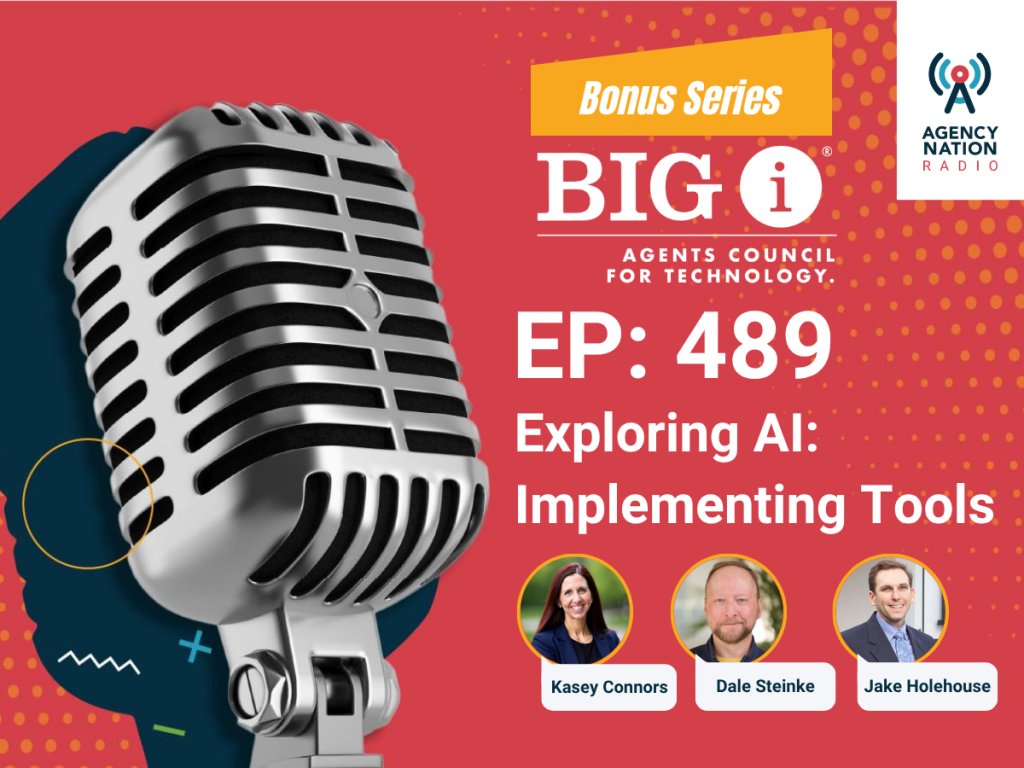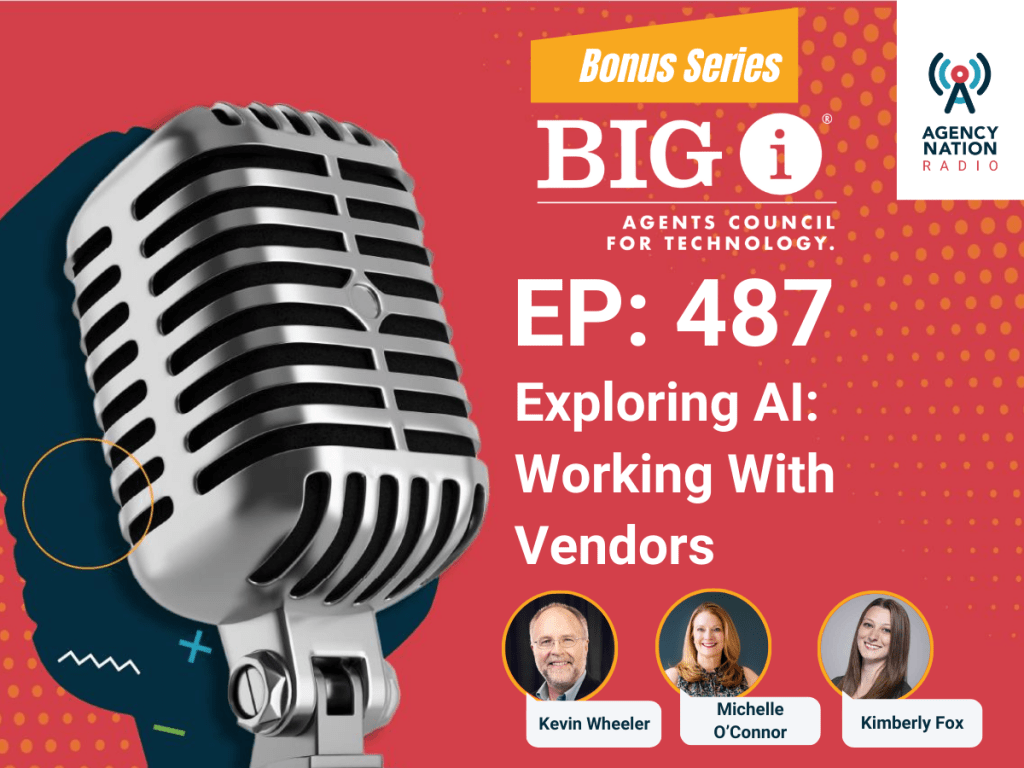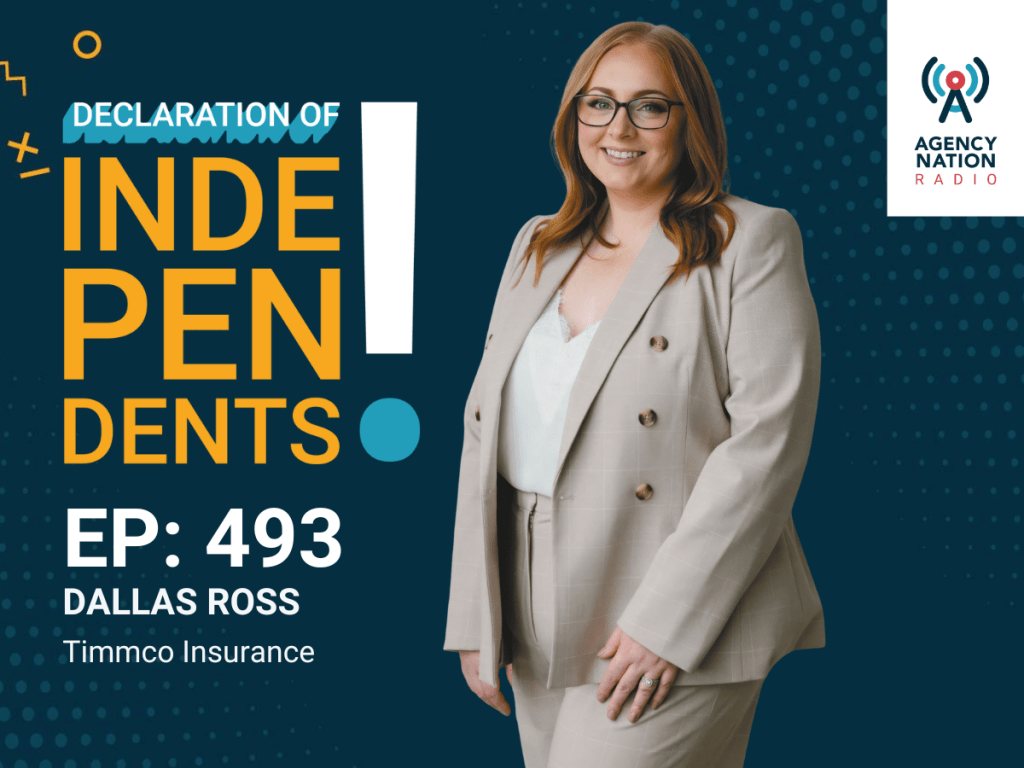How to Get on the Right Track to Unlock AI’s Potential

By Rosalie Donlon
When customers call O’Connor Insurance Associates in Charlotte, North Carolina, “Quinn” is at their service. An artificial intelligence (AI) voice assistant, Quinn answers all incoming calls, asks a few questions to determine which staff member should handle the call, and then routes the call to the correct person.
According to Kimberly Fox, commercial lines account executive at O’Connor Insurance, the agency is finding success using AI to handle routine tasks. Fox’s team also uses generative AI models, including ChatGPT, Copilot and Grok, to clean up an email before sending it; create or improve agency checklists, templates, processes and training resources; research potential markets and common exposures for a certain type of risk; summarize coverages and exclusions in a generic coverage form; and find vendors that offer a particular technology solution and create a chart comparing their features.
Implementing AI isn’t as simple as plug and play, however. It takes time to determine what AI can and should do for the agency—and which tools are the right ones for the job.
More than half of agencies, regardless of size, are interested in using AI tools for work, according to the Liberty Mutual and Safeco “2025 Independent Agents at Work Study.”
“But while interest in AI is growing, we’re still seeing gaps in adoption, with just 6% of agents saying their agency has implemented AI,” says Dale Steinke, director, Agent for the Future Advisors at Liberty Mutual and Safeco Insurance.

To set your agency up for AI success, ensure staff and customers understand the “why” of AI, double down on process improvement, make sure your data is clean and take it step by step. Here’s how:
Although AI has been around since the 1950s, it became more widespread with the introduction of Apple’s Siri in 2011 and Amazon’s Alexa in 2014. Fast-forward to 2020 and the release of GPT-3 by OpenAI, followed in 2022 by ChatGPT, has rapidly accelerated the development of AI technology and its use in almost every industry, including insurance.

Bad Data, Big Impact: A Quick Guide for Independent Agents
Agencies that are successful at implementing AI have staff that is enthusiastic about using the technology to save time or become more efficient at key tasks. The addition of AI to an agency’s workflow is likely to be accepted more quickly if leaders first gain support from internal staff.
Jason Cass, CEO of The Insurance Alliance in Maryville, Illinois, and author of the “AI2030 Future Ready Tactical Manual,” finds the biggest challenge is what he calls “the comprehension gap.” Most agencies are overwhelmed, not because AI is too complex, but because it hasn’t been explained to them in plain language.
“They don’t know the difference between a bot and an agent, or when to use one over the other,” Cass says. “So, they either do nothing or they buy software without a structure and end up wasting time and money.”
Do not underestimate the human element, agrees Kasey Connors, executive director of the Big “I” Agents Council for Technology (ACT). “The best tool in the world will fail if your team doesn’t understand why you’re using it, how it solves a problem and how it helps them,” she says. “Ask if your vendor offers onboarding, training and a peer community for support, and really understand how you are going to use the tool first, not just to try something that is AI.”
“Be clear about policies, too,” Connors adds. “People are using AI at home for everything from travel planning to gift ideas—so define what’s okay and what’s not in a work context.”
Fox observes that even though an agency is ready to embrace AI, all clients may not be. Some of her clients love the agency’s AI assistant, while other clients aren’t thrilled. “Once we explain that Quinn’s purpose is getting the call to the right person as quickly as possible, giving us more time to spend with our clients, they feel better about talking to her the next time,” she says. “You can’t please everyone, but explaining your ‘why’ can improve your odds.”

Use AI Without Losing the Human Touch
Before incorporating AI, Cass advises agents to start by putting their workflow under the microscope. “The first step isn’t buying a tool,” he explains. “It’s doing a two-week task audit.”
“What’s coming into the agency? Who’s handling it? Can it be routed to a bot, a virtual employee (VE) or a different handler?” Cass says. “AI isn’t something you bolt on. It’s something that gets threaded through your workflows to reduce drag and create visibility.”
Agents must start their AI journey with clear business use cases and goals. “Without those, your team is likely to view AI as a ‘fun experiment’ instead of a powerful tool with clear benefits,” advises Balaji Devarasetty, chief technical officer of Vertafore.
Colby Tunick, founder and CEO of ReFocus AI Inc., highlights the challenge of implementing AI without solid internal processes that everyone in the agency follows.
“Many agency leaders buy AI thinking it will solve problems that are not technological,” he says. “For example, Sally is an account manager who does things her own way. When Sally is out sick, Joe, the agency owner, steps in. A simple question from one of Sally’s accounts ends up taking Joe six hours to resolve because the agency doesn’t have formal playbooks.”

Steinke agrees that agencies should focus first on the business challenge they’re trying to address before looking for a solution because “it’s easy to get blinded by a flashy new AI tool or overwhelmed by the sheer amount of AI tools on the market,” he says.
After determining the processes that could benefit from AI, the next step is selecting the right AI technology for the task. “The core issue lies in understanding the difference between horizontal AI and vertical AI,” says Anupam Gupta, chief product officer of Applied Systems.
“Horizontal AI, like ChatGPT and Bard, is designed to be a one-size-fits-all solution. It struggles to integrate with existing insurance-specific workflows and technology, and it can even create security issues for sensitive information,” Gupta says. “Vertical AI models are trained on industry-specific and even company-specific use cases, allowing them to grasp the intricacies of the industry and seamlessly integrate into insurance workflows, thereby unlocking far greater value.”
How Can AI Help?
The impact of a successful AI integration is evident in the numbers. Cass notes that the cost per task can drop significantly. On average, tasks that previously took 30 minutes of a licensed CSR’s time can be completed in two minutes by a bot or eight minutes by a virtual employee (VE), he finds.
As a result, staff can be redeployed to higher-value work. “Instead of hiring more licensed staff, you reassign the ones you have to sales or advisory roles while bots and VEs handle routine stuff,” he explains.
Some of Gupta’s agency clients have found that they can achieve the following:
- Increase revenue by 20%-30% through improved cross-selling from AI recommendations during renewals.
- Improve employee productivity by automating most manual tasks, saving agents up to 40%-50% of time and potentially more than 500 hours per year for tasks like policy checking or comparisons.
- Reduce errors & omissions by up to 90% through prefilling data and automating validation.
- Upskill and onboard new team members through integrated AI-driven training and “catch-me-up” capabilities.
Meanwhile, Tunick’s clients have realized an 80% reduction in servicing workload because much back-office and servicing work currently being handled by non-licensed staff is being automated. To put that in perspective, he says, for a $5 million premium agency with strong processes, technology now handles the work of two or three full-time employees.
Steinke suggests researching new AI-backed vendors in the sales and service space that record customer calls and then coach agents on how they could have improved the conversation. Knowledge bots are also now capable of answering questions about risk and coverage and helping agents address customer inquiries. Of course, agents should still review the answers from the knowledge bots to ensure that the information is correct.
Exploring AI Podcast Series
Policy checking is another new category of AI-based solutions, Steinke points out. These services can compare current policies to renewals, looking for differences like new exclusions or changes in coverage limits. “By spotting and addressing coverage gaps,” he explains, “these tools help position an agency as a trusted adviser and are helpful from an errors & omissions standpoint.”
Fox has found that AI can reduce response times for communicating with clients. “When you’re writing a letter or email and want to make it sound more friendly, formal or personal, AI can help rewrite it instantly,” she explains.
Her agency has also saved time by letting AI build and design documents for agents to use. “Instead of someone taking time out of their day to create a template or training guide, we can use AI to do it in seconds,” she says. “It takes us longer to type three or four sentences explaining what we want than it does for the AI to build it, even when it’s building from scratch.”
Crucially, AI isn’t the answer for every task. Her team knows they can’t rely on AI to be 100% accurate all the time. Therefore, they don’t put themselves in a situation where that’s necessary. “Rather than asking AI to explain a coverage term, we might ask it to simplify an explanation so it can be understood clearly by someone that’s not familiar with the term,” Fox says.
Make Sure Your Data is AI-Ready
All AI technology—from traditional, machine-learning solutions like predictive analytics to the large language models behind ChatGPT—relies on accurate data to operate correctly. Agencies with a fractured data infrastructure, such as those with data in disconnected silos or lacking solid processes for regular data evaluation and cleanup, have work to do before they can fully leverage AI.
Further, many independent insurance agents don’t trust the accuracy of the information produced by AI tools. In a recent Vertafore survey of approximately 1,000 agency insurance professionals, 87% were concerned or very concerned about the quality of AI-generated work.

A key objective of utilizing AI is to provide more comprehensive and accurate data than current systems. Agencies using AI are finding that they are adding more and higher-quality data to their agency management systems. As a result, “they will be able to extract rich, business-moving insights for everything from improving market share to succession planning,” Devarasetty says.
In addition to quality, data privacy is a concern for Fox—because generative AI models absorb everything. “I think there’s a common misconception that if you have a paid or business license, it automatically means everything you input is private,” she explains.
More From the October Issue
While the paid version of an AI program might have more safeguards than the free version, paying for a license isn’t an automatic guarantee that the agency’s data is protected.
“Even though reading the terms of use and privacy policies for each vendor you’re going to work with is a pain, it’s necessary,” Fox adds. “Something as seemingly small as using AI to summarize coverage from a declaration page can be a potential data breach. You need to know what a vendor can do with the information you give it and have internal policies in place for protecting your data.”
To implement AI best practices at your agency, start small. Tunick recommends starting by building and documenting an internal servicing process. Once that process is agreed upon, the agency can layer in how technology and other tools they already use fit into that process.

A good way for agencies to ease into an operations audit is to start with their agency accounting processes, especially if they still have some manual reconciliation workflows related to carrier statements. The data for these workflows is readily available in most agencies, and several companies are already integrated with the major agency management systems.
However, more simply, start by “giving employees time to get hands-on experience and the space to discover how a tool can improve their day-to-day work,” Steinke says. “Adopting any new technology takes time and resources, and it’s important to prioritize the tools that can help solve an agency’s biggest business challenges.”
More on AI
“The backbone of great insurance work will always be people and relationships. That’s not changing. But AI is going to change the way our industry does business,” says James Thom, chief product officer at Vertafore.
Fox believes agents must have a real conversation about the ethical considerations of using AI before implementing it. “While we haven’t seen much legislation about the use of AI yet, establishing your own regulations for how it’s used in your agency is a vital step in the process,” she explains.
Decisions about usage, such as whether agents disclose their use of AI to clients and partners and what information they provide AI systems, can significantly impact culture and adoption. “If you don’t make the important decisions on the front end, others will make them for you—and you may not like the results,” she adds.
Agents remain essential for critical, customer-facing decisions and relationship-building, as Cass explains in the “AI 2030 Future Ready Tactical Manual.” Meanwhile, AI supports routine, data-driven and repetitive tasks to enhance productivity and accuracy.
“All of these tools augment independent agents by streamlining processes, enhancing capabilities and creating capacity,” Steinke says. “They help free up time so agents can focus on what matters most: customer relationships.”
Tips to Get Started
Assess your tech stack. Connors says agencies should ask: “What do we already have? Are we using it to its full potential? What’s our budget?”
Learn from others. Go to your team first and listen to their pain points. Their ideas can point you in the right direction. “Your network is also an invaluable resource, so don’t be afraid to use it!” Connors says. “Talk to agents you know, explore resources available through associations or memberships, and ask them for introductions to other agents who can share their insights.”
Understand your current operations. Previously, when trying to understand an agency’s business processes, the agent would “follow the paper” by noting every step in any transaction from customer contact to binding a policy to assisting with a claim. The concept still holds true when an agency is attempting to trace their operations for AI implementation, but the focus should be on how many hands touch the transaction and how long it takes to reach the desired result.
Expect the unexpected. AI is still new, and so are many of the vendors. “Nothing is going to come ‘out of the box’ as a perfect fit for your agency or needs,” Fox says. “Be prepared to make adjustments, probably more than once, along the way.”
Take the time to research. Explore multiple vendors, ask questions and read the fine print before you sign the dotted line, Fox advises. “Not every vendor or solution is going to work for you, and that’s okay. Your agency is unique, so your technology needs will be, too,” she says. “Give yourself time to find the ones that fit and continually evaluate how well they meet your needs.”
Think positive and stay focused. There is huge opportunity in implementing AI, and that’s how agencies should be thinking about it, Steinke says. Agencies who focus on the opportunity they have to start their AI journey today will be more prepared for the future.
Rosalie Donlon is a former attorney and managing editor at Aartrijk.
















